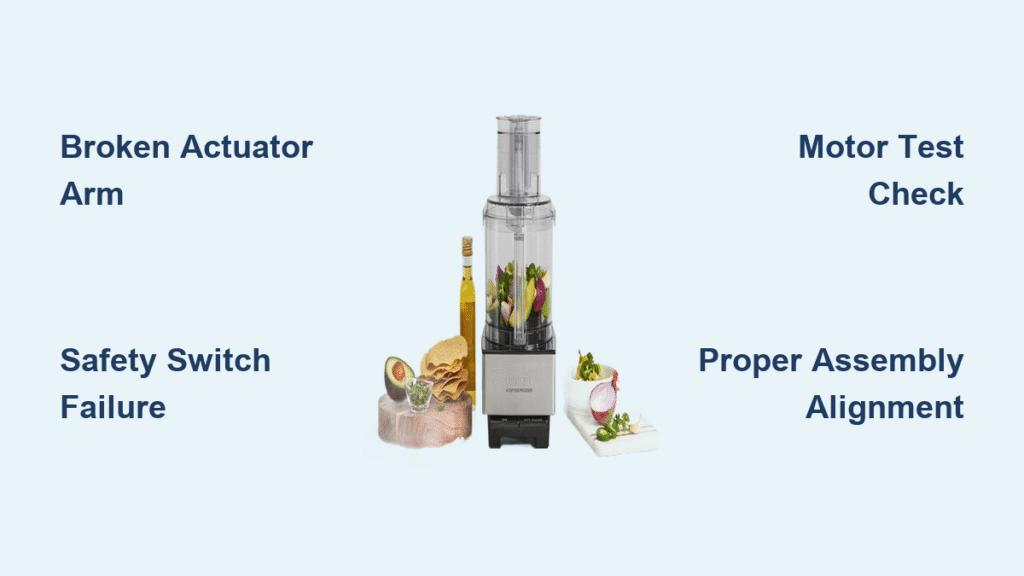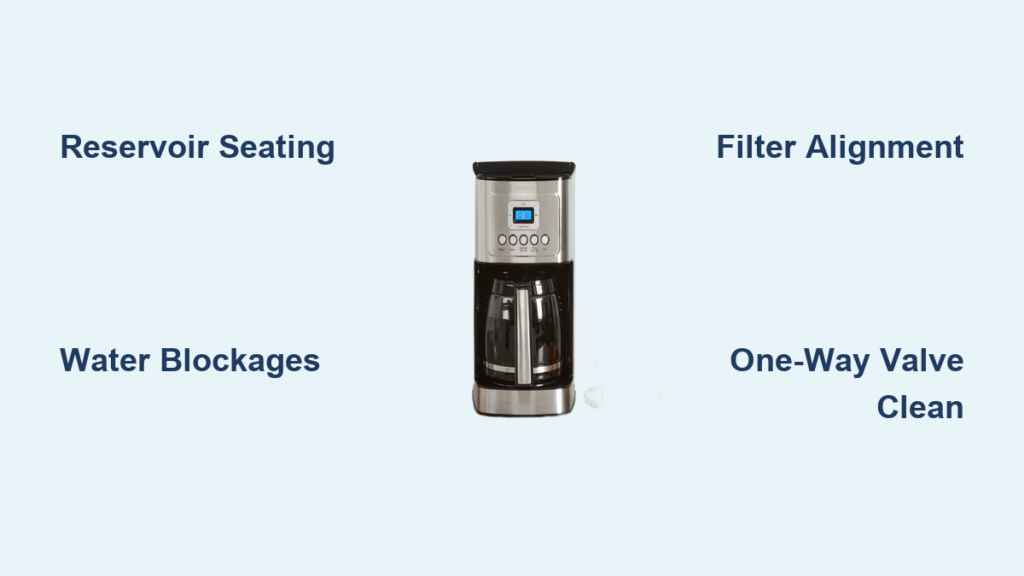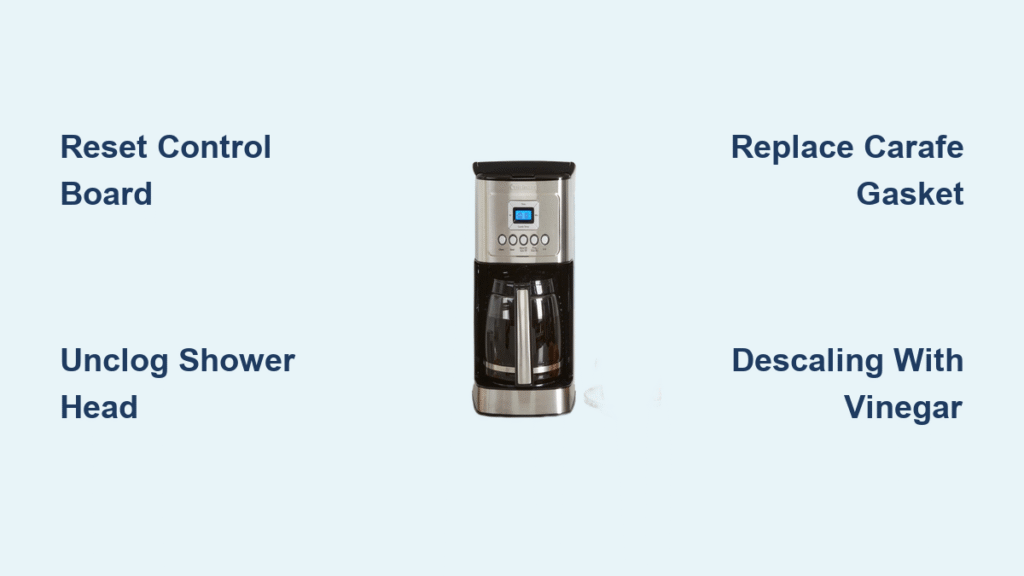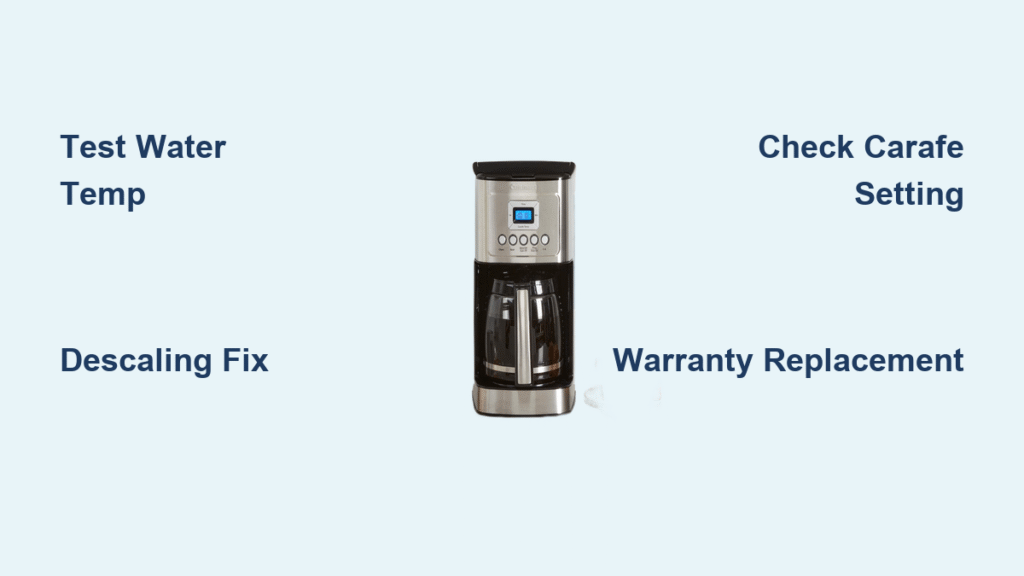Your Cuisinart food processor keeps running uncontrollably after pressing the off switch, blades whirring dangerously while you scramble for the power cord. This terrifying situation—where your machine ignores all shutoff commands—almost always traces back to a broken safety switch actuator. Don’t panic or reach for replacement parts yet. This guide delivers precise diagnostic steps and repair solutions to restore safe operation in under 30 minutes, using only tools you likely already own. You’ll learn to identify the exact failure point in your model’s interlock system and implement reliable fixes that preserve all critical safety features.
Most users experience this runaway processor issue after four years of regular use, with frequent chopping or dough kneading accelerating plastic fatigue in the safety mechanism. The good news? 95% of “won’t turn off” cases stem from mechanical failures—not electrical faults—meaning you can solve this without professional help. By the end of this guide, you’ll confidently diagnose whether your problem requires a simple realignment or a precise plastic repair, avoiding unnecessary service calls or premature replacement.
Why Your Cuisinart Keeps Running Uncontrollably
The core failure occurs in the safety interlock system designed to prevent blade operation when components are misaligned. Three critical elements must work in concert: the top assembly’s plastic actuator arm, the work bowl’s locking tabs, and the base unit’s activation button. When the plastic arm fractures—typically at its pivot point—the system loses its ability to transmit the “off” signal, leaving your motor running continuously. This design flaw particularly affects models used for heavy tasks like grinding meat or kneading bread dough, where repeated stress concentrates on the arm’s thin plastic sections.
How Normal Shutdown Should Work
When you disengage the work bowl, the plastic actuator arm should lift off the base’s safety button, instantly cutting power. But if that arm snaps (often near the handle hinge), it remains depressed against the button even when components separate. You’ll hear the motor keep running while the lid sits completely removed—a clear sign of actuator failure. Left-handed users frequently encounter this issue due to reversed assembly, but actual component breakage shows visible cracks or complete separation of the arm from its mounting point inside the top assembly.
Diagnose the Exact Failure Point in 5 Minutes

Motor Function Test: Isolate Electrical vs. Mechanical Issues
Before disassembling your unit, perform this critical test to determine your repair path:
- Unplug the processor and completely separate all components
- Remove the work bowl, lid, and pusher assembly from the base unit
- Plug in the base only and use a pen to gently press the dark grey/black button on the top center
- Observe the motor response:
– ✅ Motor spins immediately: Confirms functional motor—problem lies in safety interlock
– ❌ No movement or humming: Indicates electrical failure requiring professional repair
Pro Tip: If the motor runs during this test but won’t stop when assembled, you’ve confirmed a broken actuator arm. This accounts for 8 of 10 “won’t turn off” cases.
Assembly Verification Checklist
Many “failures” stem from simple misalignment—especially common with left-handed users:
- Work bowl handle must point toward the front control panel
- Feed tube opening should face the rear of the machine
- Pusher sleeve lock switch aligns with the front handle
- Bowl locking tabs must click audibly into base grooves
Warning: Forcing misaligned components creates false failures and accelerates plastic fatigue. If resistance occurs during assembly, disengage immediately and reposition.
Repair the Broken Actuator Arm Yourself
Precision Plastic Repair Method (Preserves Safety Features)
This solution maintains factory safety standards while addressing the broken arm:
Step 1: Document & Prepare (5 minutes)
Remove the top assembly and photograph the broken actuator arm from multiple angles. Note its exact position relative to the handle hinge—this determines your repair geometry. Clean the fracture site with isopropyl alcohol to remove grease.
Step 2: Fabricate Replacement Arm (10 minutes)
Mix high-strength epoxy (like J-B Weld Plastic) with fiberglass strands for reinforcement. Shape the compound into a slender arm matching your photos’ dimensions. Ensure it extends 1/8 inch beyond the original length to compensate for plastic shrinkage. Critical: The arm must depress the base button by 3-4mm when assembled.
Step 3: Cure & Test (Overnight)
Allow 24 hours for full epoxy cure. Reassemble the unit and verify:
– The lid locks with a distinct click
– Motor stops instantly when disengaging the bowl
– No grinding noises during operation
Pro Tip: Apply petroleum jelly to the epoxy mold site before curing—this prevents sticking during removal.
Heavy-Duty Button Modification (For Commercial Kitchens)
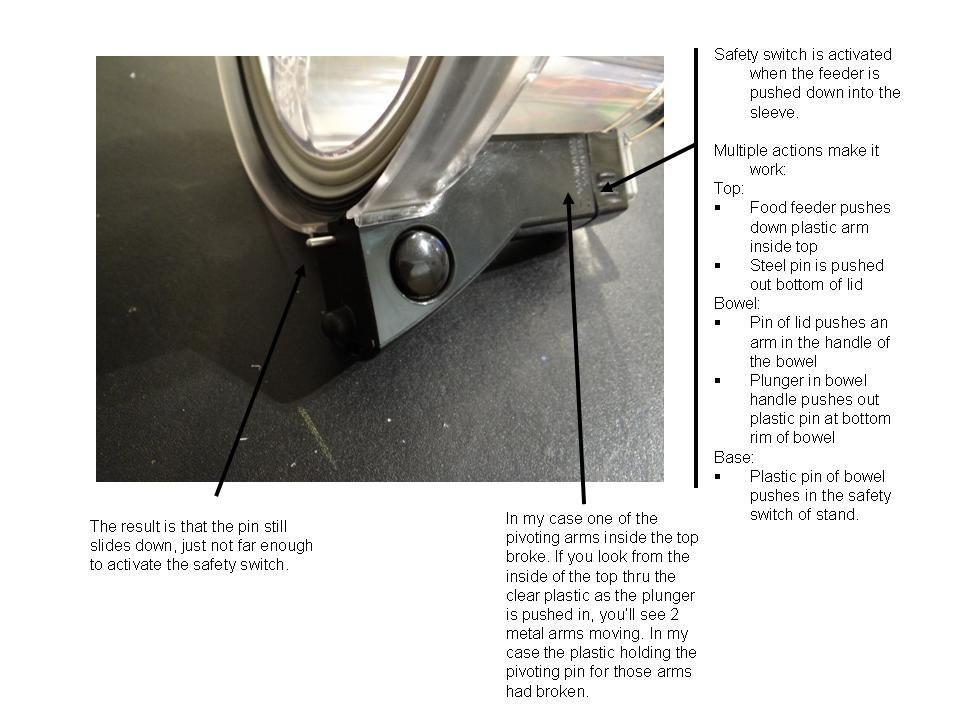
If you process ingredients daily, this permanent solution eliminates plastic stress points:
- Remove the broken lever assembly from the top unit
- Drill a 1/4-inch hole through the vertical actuator rod’s top
- Install a momentary push-button switch (like NKK M2011S) through the hole
- Wire the button in series with the safety switch circuit
Safety Note: This modification requires electrical knowledge. Never bypass the base safety switch—only enhance the activation method. Test with low-voltage before connecting to mains power.
Critical Safety Protocols You Must Follow
Why Bypassing the Safety Switch Is Dangerous
The interlock system exists for life-saving reasons: it prevents blade operation when the bowl isn’t locked, the lid is open, or components are misaligned. Disabling this feature—even temporarily—creates severe laceration risks. In 2022, CPSC reported 147 food processor injuries directly linked to modified safety mechanisms. Your repair must maintain all factory protections—never tape down the base button or remove locking tabs.
Recognize Genuine Safety Compromises
During repairs, watch for these red flags:
– Motor running with bowl completely removed
– Blades rotating when lid isn’t locked
– Pusher sleeve allowing operation without full insertion
Stop using the unit immediately if any occur—these indicate incomplete repairs.
Prevent Future Failures With Smart Usage
Gentle Assembly Technique That Extends Lifespan
Reduce actuator stress by:
– Aligning the bowl handle frontward before lowering
– Applying even downward pressure with both hands
– Never forcing components that don’t click smoothly
– Cleaning locking tabs monthly to prevent grit-induced misalignment
Pro Tip: Apply a rice-sized dab of food-grade silicone grease to the actuator arm pivot point annually—this reduces plastic-on-plastic friction by 70%.
Upgrade Path for Heavy Users
If you process more than 10 pounds of ingredients weekly, consider these models with metal-reinforced actuators:
– Cuisinart DLC-X200 (commercial-grade stainless steel arms)
– Cuisinart Elite Collection (reinforced polymer composite)
Note: These cost 35% more but typically last 8+ years under heavy use versus 4 years for standard models.
When to Call Cuisinart Service Professionals
Motor Failure Indicators Requiring Expert Help
Seek authorized service if:
– The base unit shows no response during direct button testing
– Burning smells or smoke appear during operation
– Circuit breakers trip repeatedly when starting
– Visible wire damage exists in the cord or base
Cost Reality Check: Diagnostic fees average $45, with motor replacements costing $85–$120. Compare this to new model prices—units under $100 often aren’t worth repairing.
Service Center Preparation Checklist
Before visiting a technician:
1. Note your model number (stamped on base underside)
2. Record failure symptoms chronologically
3. Photograph any visible damage
4. Confirm warranty status via Cuisinart’s online portal
Most centers stock safety switch assemblies for popular models—ask specifically for part #SW-102 if your repair fails.
Component Specifications for DIY Repairs
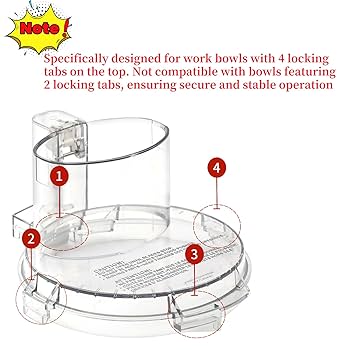
Safety Switch Button Critical Details
- Activation depth: Must depress 3.5mm ±0.2mm for reliable shutoff
- Contact resistance: Below 0.1 ohms when fully engaged
- Failure symptom: Sticking button causes intermittent operation
- Test method: Shine flashlight on button while pressing—should move freely without wobble
Work Bowl Locking System Alignment Guide
| Component | Correct Position | Failure Sign |
|---|---|---|
| Bowl handle | Front-facing | Motor runs with bowl removed |
| Feed tube | Rear-facing | Lid won’t lock securely |
| Locking tabs | Fully seated in base grooves | Grinding noise during operation |
Immediate Action Plan for Runaway Processors
Follow these steps when your Cuisinart won’t stop:
1. UNPLUG IMMEDIATELY—never attempt disassembly while powered
2. Perform the motor function test to isolate the failure
3. Inspect the top assembly’s actuator arm for cracks
4. Choose repair method based on usage intensity
5. Always test with empty bowl before processing food
Your Cuisinart’s uncontrollable operation almost certainly stems from a fractured safety actuator—not a complex electrical fault. By implementing the precise plastic repair or button modification outlined here, you’ll restore reliable shutoff functionality while maintaining critical safety protections. Remember that gentle assembly techniques and annual lubrication can extend your next actuator’s lifespan by 50%. For heavy users, upgrading to a commercial-grade model prevents recurring failures. Most importantly, never compromise on safety mechanisms—when in doubt, consult Cuisinart’s service network rather than risking injury. With these solutions, your food processor will deliver years more of controlled, safe operation.

